Mixed media installation and performance
Curated by Maria Baibakova
Paradise row, London, UK
Hours performed: 120
In a powerful invocation of the persistent human phenomenon of suicide (a suicide occurs every 39 seconds according to the world health organisation) the artist probed an interior landscape of mental distress and anguish. Suicide has been regarded in radically different terms by different societies ranging from, for example, classical greek and roman culture in which suicide could be the highest expression of honour and civic duty to contemporary western society, in which, due to the legacy and persistence of the judeo-christian belief in the sacredness of all life, the subject remains taboo and the act itself is typically seen as shameful.
For the duration of five days, the artist sat naked on the gallery floor talking non-stop with his hands crossed in the funerary custom of eastern orthodox christianity. in front of him a sculptural replica of his torso, encased in glass, was stood. five rats - a number corresponding to both the most popular methods of suicide and the natural density of rat social groups, gnawed away at the sculpture's perishable substance. As he sat, watching a representation of himself being devoured, he’s produced a vivid portrayal of a state of extreme cognitive dissonance, externalizing an internal dialogue that, as one dead, will pay no heed to social convention. Instead he’s vomited out an unedited stream-of-consciousness regardless any personalities/attitudes/social boundaries, talking to anyone who approached as he progressed deeper into discomfort and confusion. Whenever he - for any reason - would interrupt his internal monologue, he would then start reciting a russian orthodox prayer, stand up from the gallery floor, take a hammer located on the floor in front of him, walk across the room, choose one of 225 mirrors placed against gallery's walls, start kissing it and then crash it with the hammer. He would then walk barefoot on the broken mirror to calm his thoughts, head back to his seated position and re-start his monologue. Recalling the radical body practices of the 60's and 70's, from Vito Acconci's highly charged self-marking and social theatre of the psyche to Chris Burden's elevation of sacrificial ritual into an aesthetic regime, i eat me splits our attention between the real, physical presence of the artist and the symbolic representations inherent to the subject matter.
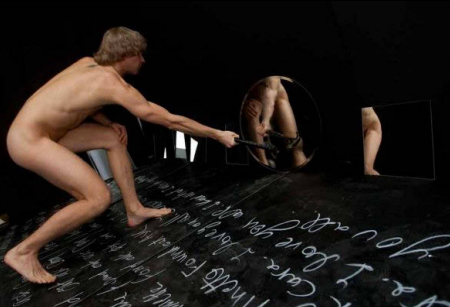
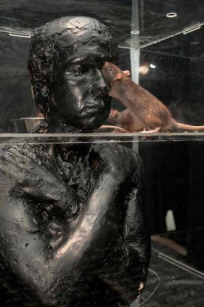
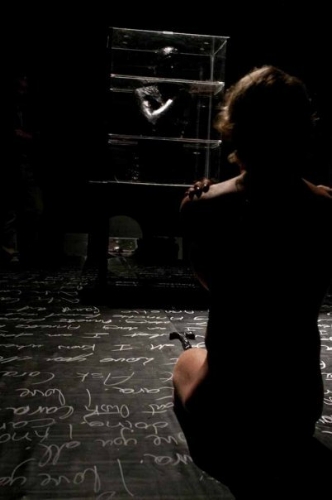
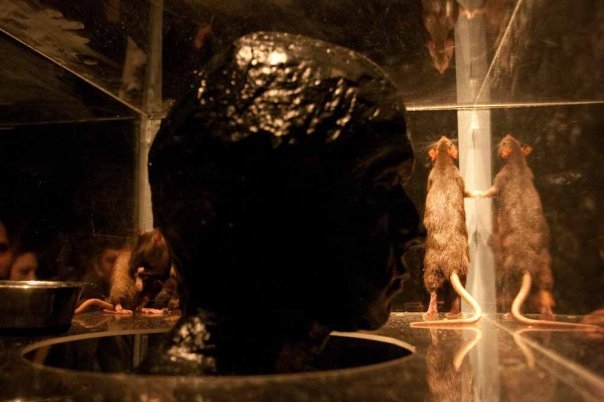
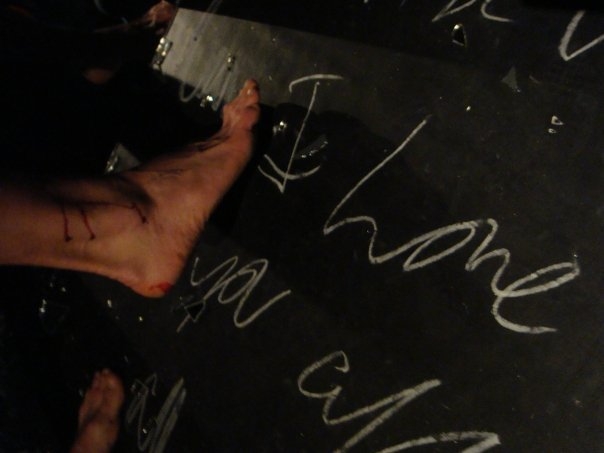
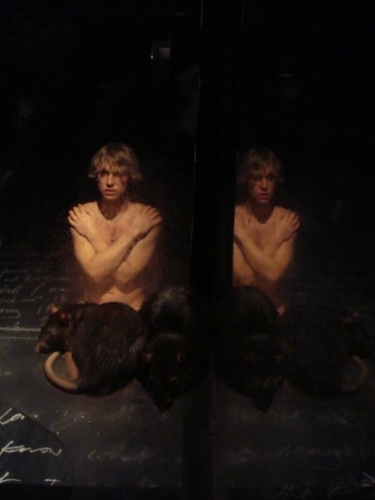
Paradise Row Gallery, London, UK
